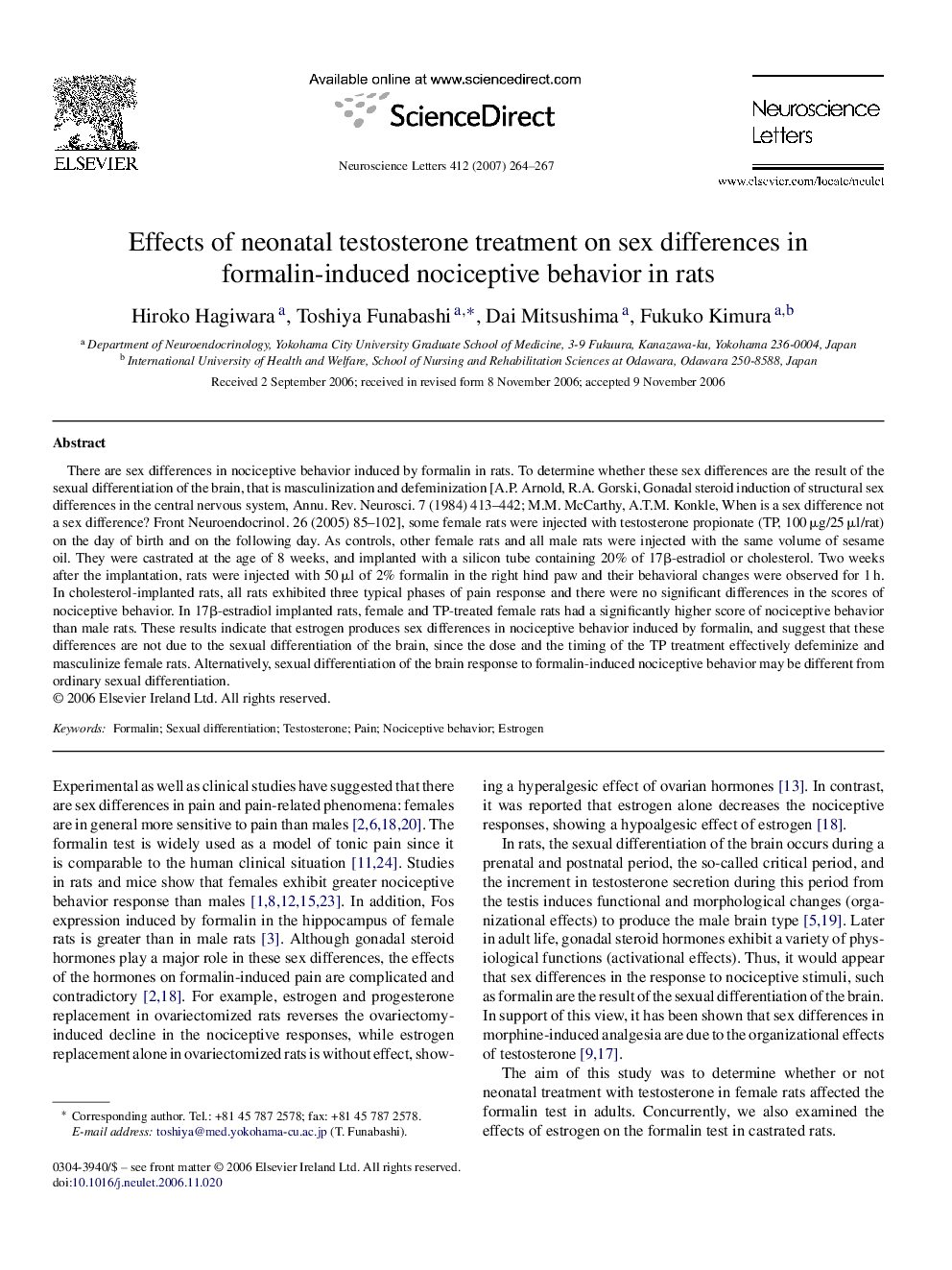| Article ID | Journal | Published Year | Pages | File Type |
|---|---|---|---|---|
| 4350079 | Neuroscience Letters | 2007 | 4 Pages |
There are sex differences in nociceptive behavior induced by formalin in rats. To determine whether these sex differences are the result of the sexual differentiation of the brain, that is masculinization and defeminization [A.P. Arnold, R.A. Gorski, Gonadal steroid induction of structural sex differences in the central nervous system, Annu. Rev. Neurosci. 7 (1984) 413–442; M.M. McCarthy, A.T.M. Konkle, When is a sex difference not a sex difference? Front Neuroendocrinol. 26 (2005) 85–102], some female rats were injected with testosterone propionate (TP, 100 μg/25 μl/rat) on the day of birth and on the following day. As controls, other female rats and all male rats were injected with the same volume of sesame oil. They were castrated at the age of 8 weeks, and implanted with a silicon tube containing 20% of 17β-estradiol or cholesterol. Two weeks after the implantation, rats were injected with 50 μl of 2% formalin in the right hind paw and their behavioral changes were observed for 1 h. In cholesterol-implanted rats, all rats exhibited three typical phases of pain response and there were no significant differences in the scores of nociceptive behavior. In 17β-estradiol implanted rats, female and TP-treated female rats had a significantly higher score of nociceptive behavior than male rats. These results indicate that estrogen produces sex differences in nociceptive behavior induced by formalin, and suggest that these differences are not due to the sexual differentiation of the brain, since the dose and the timing of the TP treatment effectively defeminize and masculinize female rats. Alternatively, sexual differentiation of the brain response to formalin-induced nociceptive behavior may be different from ordinary sexual differentiation.
